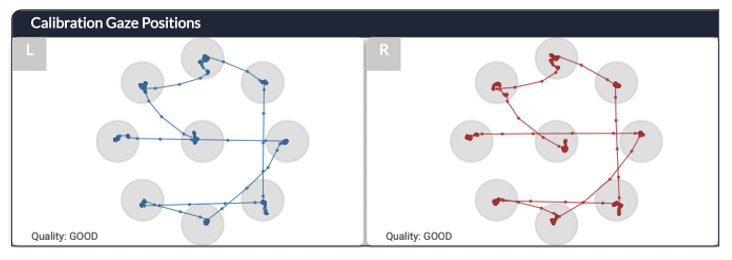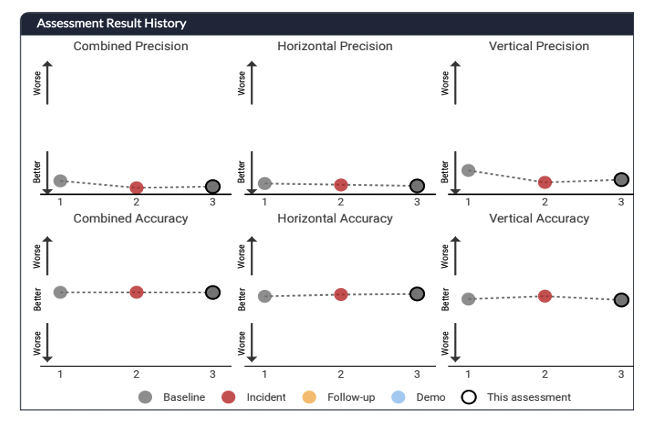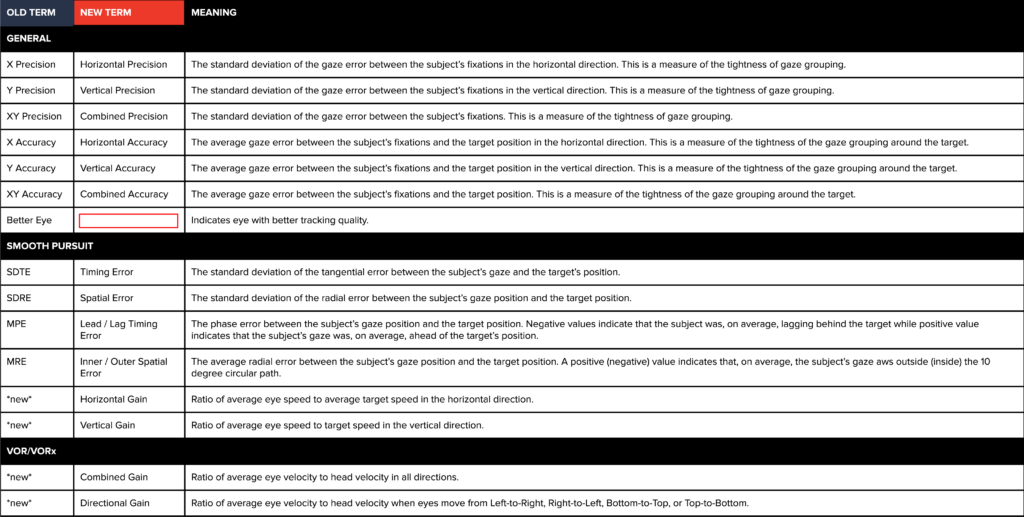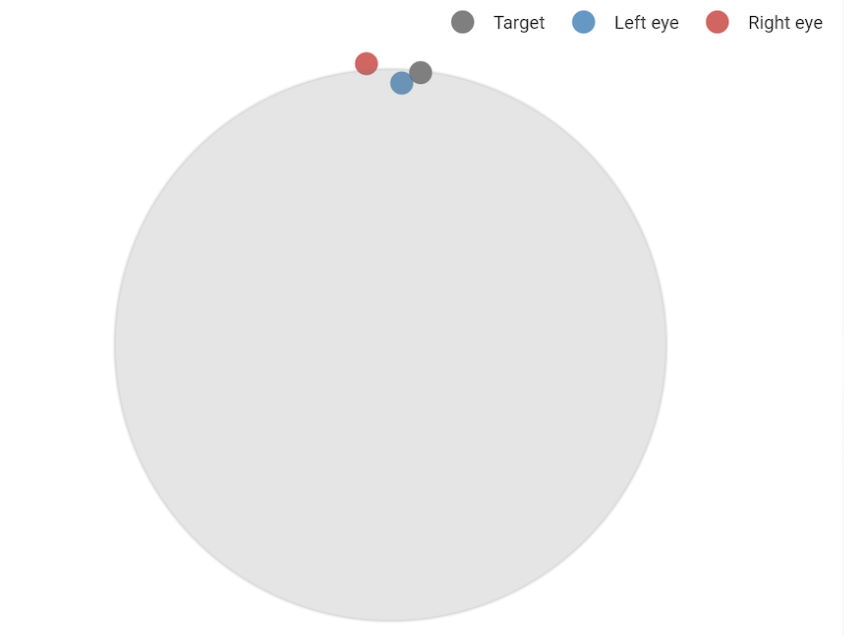Blog: Highlights From Our Latest Software Release
Contributions made by Jan van Merkensteijn, Umesh Rajashekar, and Scott Anderson
SyncThink is excited to announce the most significant software upgrade in the history of our EYE-SYNC platform. The new version, implemented this month, is multifaceted and driven by the consistent feedback we receive from our many users utilizing EYE-SYNC on a daily basis. As a result, these updates reflect a company wide effort to bring these advancements forward.
Our newest release, EYE-SYNC 1.1.0 v25, improves our core functionality from the first patient interaction all the way through to the final delivered report of results. Client facing, we have overhauled our results visualizations, metrics, and reporting capabilities to establish a more thorough and comprehensive output of patient disposition, all in one centralized location. On the back end, we have supported this by improving the authentication workflow and database management, making it easier for patient records to be accessed and stored securely. It’s a giant leap forward, so much so that we’ve internally referred to this update with codename “Forward Saccade” since it is accelerating what we do on so many levels so far ahead into the future.
The new report and visualization suite is now broken down into three major areas, all of which are now fully customizable and interactive. This allows the clinician to decide what information is important to them, and to configure specific aspects of results that are in need of pinpointing for further interpretation and monitoring.
Summary View
The Summary View is immediately available to the clinician upon the assessment completion, allowing for a summarized version of the results to be viewed and interpreted. From here, the clinician can add notes/comments, adjust the assessment type, and get an immediate indication of the assessment data quality. At this level, the clinician may also generate the next two other features.
Full Expanded Reports
The Full Expanded report generates a comprehensive overview of patient information and data collected from each assessment, which can be utilized to support clinical decision making. This report can be customized to highlight areas deemed concerning by the clinician and can be compared to historical assessment results captured previously. The Full Expanded report is also able to be exported into a PDF and emailed to a third party, or into a preferred Electronic Medical Record (EMR).
Gaze Calibration
Approximately half of the duration of our 60 second eye tracking assessments are spent performing a calibration sequence. Calibration helps our infrared cameras distinguish the shape of each patient’s corneal reflection and can determine if the patient is malingering or doing something else that can lead to miscalibration and unreliable data capture. We view this as a critical aspect of the test administration, and it is often a focus of our in-person training. As a result, we have added the calibration results to the Full Expanded report so that clinicians will better understand when miscalibration occurs, and how to correct for this when conducting future assessments.

Symptom Inducement
One aspect of our eye tracking assessments that we’ve always been interested in is whether or not symptoms are exacerbated with performing the test. This is a key insight we have found that can provide guidance in determining an effective and targeted treatment plan. As a result, we now include the results of pre- and post-assessment symptom inventories in the Full Expanded report, so that clinicians can further understand the impact of symptom inducement when assessing for impaired function. Pre- and post-assessment symptoms are rated on a scale of 0-10 for headache, dizziness, nausea, and fogginess.
Historical Performance Comparison
One of the easiest ways to visualize performance over time occurs through our assessment results history, also now included in the Full Expanded report. This visualization breaks down the key metrics of each assessment and plots them over time, so that the clinician may better understand how the patient is trending, and how effective the planned intervention has been at resolving the patient’s condition. Explicit indicators of better or worse make it easier for the clinician to know how the patient is improving from visit to visit.

Terminology
In the interest of making our report more user friendly, we’ve revamped our metric terminology to be more consistent to accelerate its understanding, and provided clear and concise definitions to each term. Below are some examples that describe these changes.

Playback
The Playback feature arms the clinician with arguably the most important information to make clinical decisions; a recorded view of the patient performing the assessment. This too can be customized to different speeds, so that the clinician may clearly see where many gaze errors are occurring during the assessment. This can provide valuable when identifying explicit impairment, highlighting disconjugate gaze, and when looking for areas of poor performance that could be improved with training. We’ve already heard from several users that being able to show patients their test performance also has been extremely helpful in helping them understand the severity of their condition.


In addition to the playback, there is a standard video scrubbing bar that allows for quick and precise fast forwarding, rewinding, and time point selection. To the left of the scrubbing bar is a play/pause button. To the right of the video scrubbing bar is a dropdown menu to adjust the playback speed. The speed can be adjusted from normal (100%) to 75%, 50%, and 25% of the actual speed. Slowing down the playback affords the clinician more clarity on the nature and frequency of gaze errors that occur during the assessment.
Enhanced Authentication and Database
In addition to the features discussed above, we’ve also enhanced our backend database functionality to improve the EYE-SYNC user experience. These include a fresh database schema (thanks to our partners at Couchbase) and the implementation of Couchbase Lite 2.0. This will notably improve load times for groups and members and facilitate exiting future functionality.
The new verbose authentication flow for when logging in is as follows:
Validating Credentials → Accessing Session → Accessing Institution → Syncing Institution (%)
Possible authentication errors that may occur include:
- Invalid User Credentials
- Unspecified Authentication Error
This month’s release represents the first of many goals we have for 2021. It also reflects how influential our users are at deciding how EYE-SYNC evolves, so that it may solve their needs and improve the lives of their patients. As we roll out these features, we recognize this is the first in a multi-phase roll out plan for many comprehensive features that will become part of the future core functionality of our software.
To learn more, follow our blogs or contact us at info@syncthink.com.